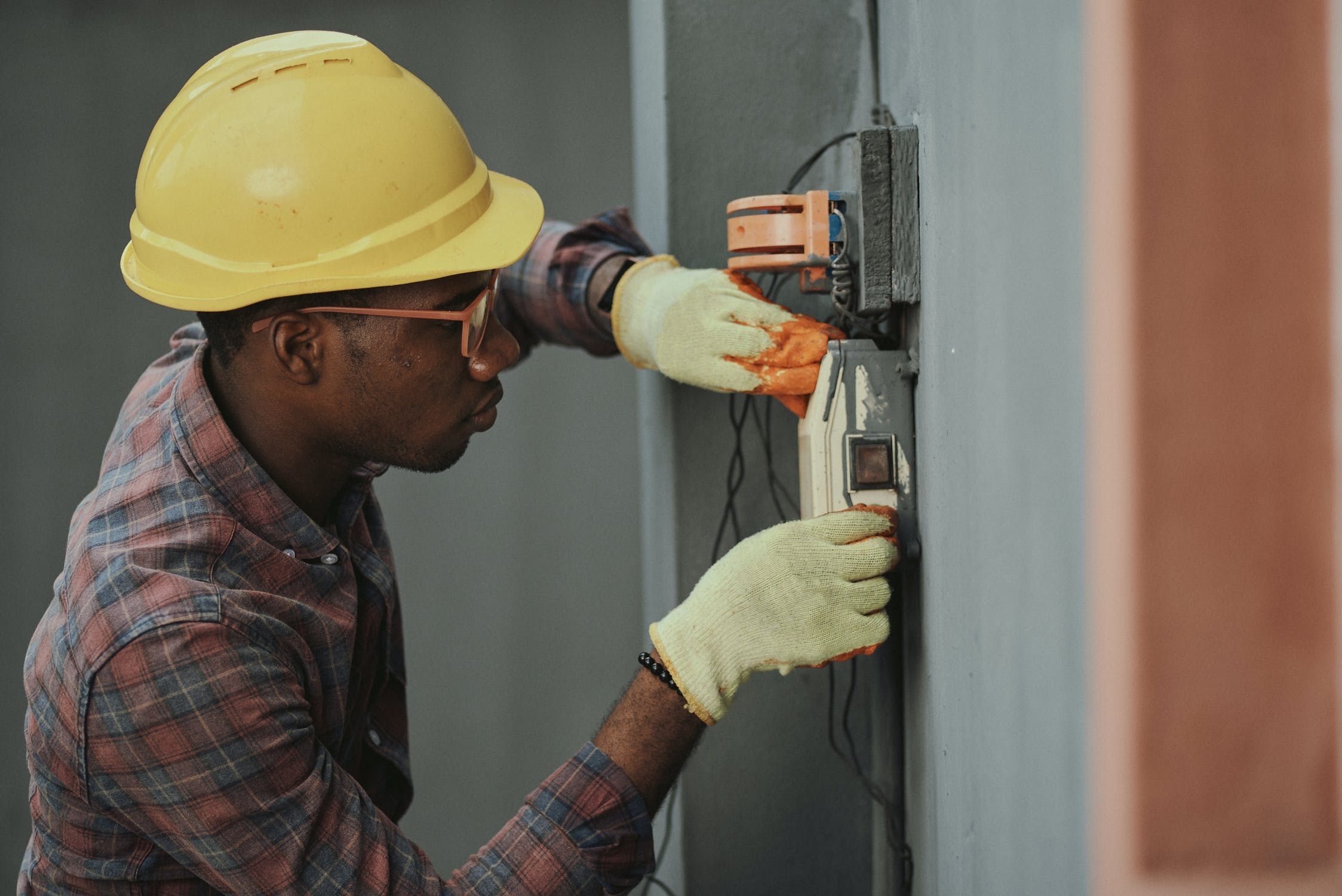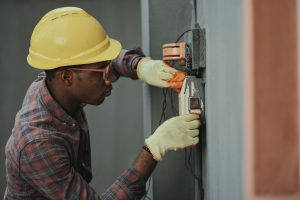
How to become a Commercial Electrician
- by Jonathan Wood
- Posted on April 6, 2022
Commercial electricians install lighting and power outlets in commercial buildings. Their wiring procedures follow a three phase approach. Two smaller legs are connected to one voltage, while the larger leg is connected to the higher voltage. Commercial power requirements can range from 120 volts up to 208-240 Volts and as high at 277/480 Volts. Commercial wiring is typically run inside conduits to protect it from the elements. Some electricians use exposed walls as their wiring system.
Industrial and commercial electricians perform similar tasks, though their job requirements are much different. These professionals have special training and certification to work within industrial and manufacturing environments. The electrical equipment used to manufacture is extremely sensitive and expensive. Industrial electricians must be able to understand the wiring requirements for such facilities. A commercial electrician can provide electrical wiring, emergency services, and upgrades for commercial buildings. Complex and high-voltage electrical systems are common in commercial buildings.
An apprenticeship program will help you get started on the path to becoming a commercial electrician. The apprenticeship program will allow you to gain practical experience while learning the trade. It will also give you valuable insight into the industry. You will also learn about safety in the electrical industry. An electrician certified will be able diagnose and fix any issues you may have with your electric system. This training will make a significant contribution to your career. The pay is competitive. It’s also possible to work flexible hours.
An apprenticeship phase is where a commercial electrician spends between four and six year. This training will enable you to gain more knowledge about the field. It will include classroom and on-the job training with employers. You will also learn how to use monitoring tools, which will allow you to detect errors and correct them before they damage the building. While this phase is crucial, most of the learning happens off-site.

A two-part apprenticeship program is required for commercial electricians. An apprenticeship program is required during the apprenticeship. The apprentice phase will be the first. This phase lasts between four and six year. After the apprenticeship is completed, you will be able to receive on-the job training from your employer. It will take between three and six months. The next phase will be the journeyman phase. Here you will complete the training and take your state electrical exam.
After you have completed the apprenticeship, it is possible to practice and become a commercial electrical contractor. In this phase, you will work with various tools and devices that are crucial for the industry. You will be able to use various electrical tools for different purposes including circuit breakers as well as power supplies and lighting. You will also learn about different types of equipment and how they are used. You will need knowledge about how to repair and maintain equipment in order to avoid electrical issues.
Commercial electricians have a wide range of experience. Some specialize in lighting, while others specialize in wiring and power systems in large factories. Commercial electricians will have to deal with complex lighting systems within a building. In this area, you will need to know how to wire a building. The wiring is an essential part of the electrical system, and you can expect your electrical contractor to use the latest technology. It must also be tested and certified safe.
Commercial electricians can use many tools and techniques. You will need to be able to use power tools as well as monitor electrical systems. This field will require you to know how to work in a variety of materials. You will need to work with different materials, including plastic and metal. This type of environment will require different equipment and components. Many materials are used in the construction of an electrical system. These components are designed to be compatible with and interact with one another.
Industrial electricians can also be found in commercial and industrial buildings. These facilities are equipped with expensive machinery and large electrical systems. An industrial electrician can have many skills, from troubleshooting to installing electrical systems. They can work in various professional settings, including townships or government buildings. These types of jobs can be accessed by many customers, including employees as well as business owners.
Commercial electricians install lighting and power outlets in commercial buildings. Their wiring procedures follow a three phase approach. Two smaller legs are connected to one voltage, while the larger leg is connected to the higher voltage. Commercial power requirements can range from 120 volts up to 208-240 Volts and as high at 277/480 Volts. Commercial…
